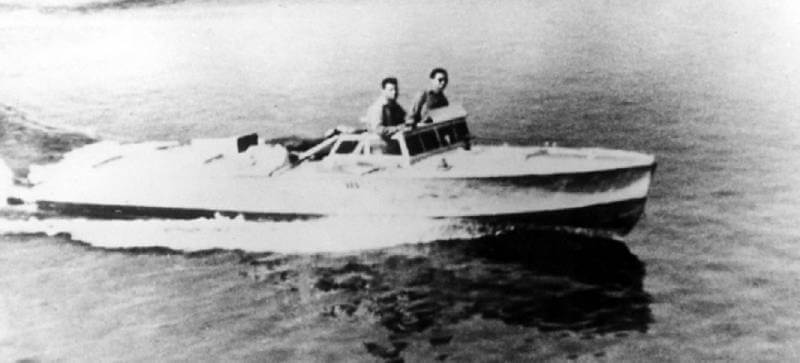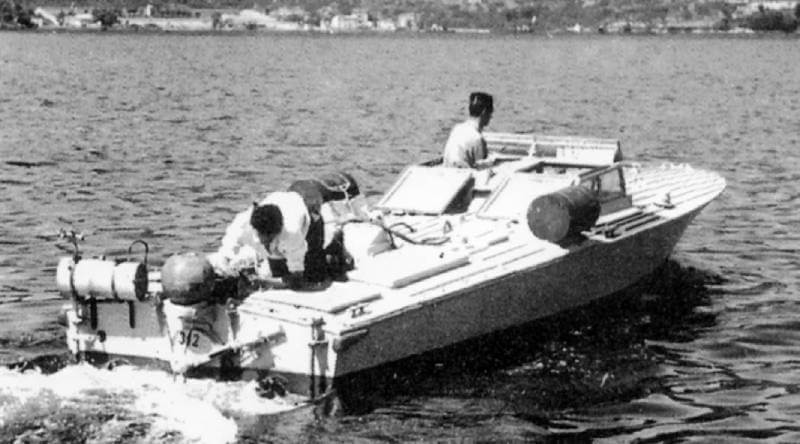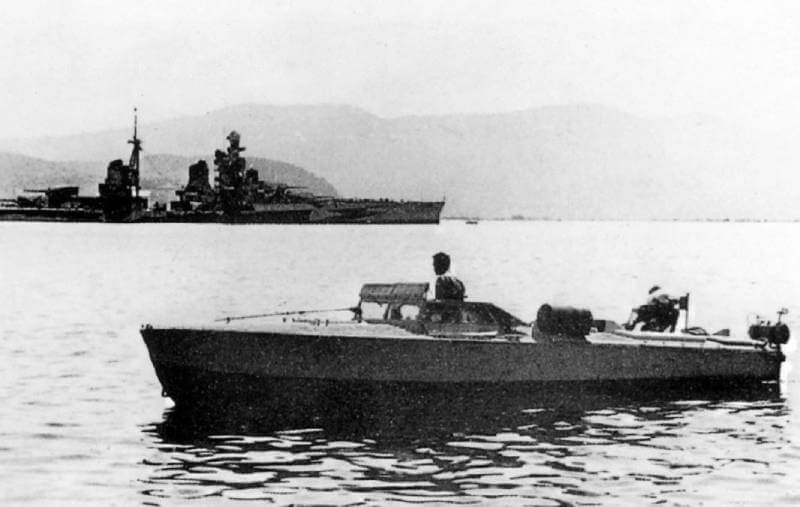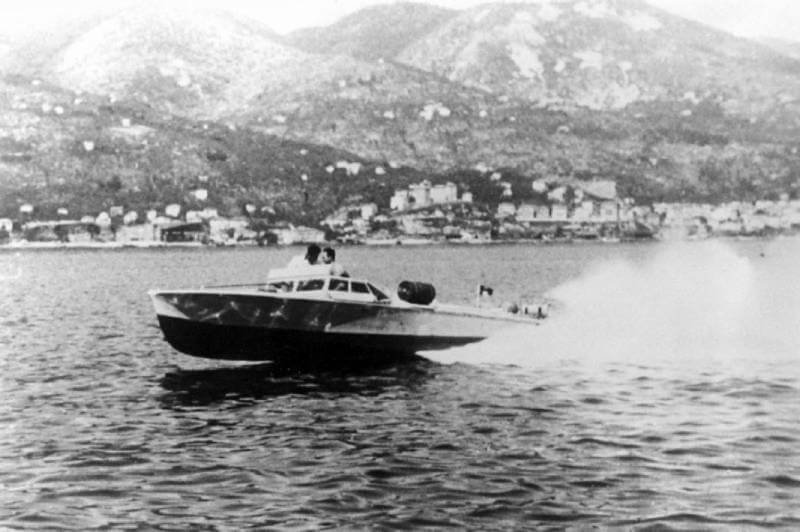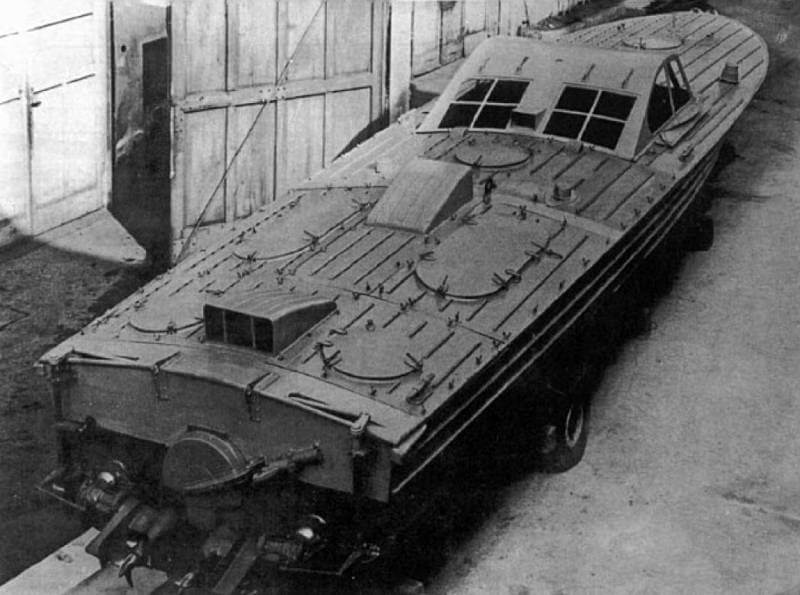| Length |
| 6.5 metres |
| Wide |
| 2.2 metres |
| Height |
| 1.75 metres |
| Weight |
| 1,750 kilograms |
| Propulsion |
| Alfa Romeo 6C 2500 petrol engine |
| Armour |
| – |
| Armament |
| Two 450-millimetre torpedoes |
| History |
 |
The Motoscafo Turismo Silurante (MTS), or “Torpedo-carrying Touring Boat,” emerges as Italy’s solution to producing cost-effective coastal motor torpedo boats (MTBs) during the Second World War. The design draws inspiration from the typical Adriatic motorbarca di turismo – a fast, wooden-hulled coastal craft favoured by the Italian gentry. By adapting this familiar design, Italy aims to build a large fleet of small torpedo boats at a fraction of the cost of the larger MAS boats.
| Motoscafo Turismo Silurante |
The development of a small, single- or two-seater motorboat equipped with torpedoes of reduced length and charge is initiated by the General Staff of the Regia Marina. The project is assigned to CABI of Milan, with Baglietto Shipyards of Varazze responsible for hull design. The initiative, referred to as the “Omega Project,” begins in January 1940, with the first design configuration recorded under CABI drawing A.255.
The craft features a wooden, hard-chined hull with a low V-shaped bow section. It measures 6.5 metres in length and 2.2 metres in width, with a maximum depth of 1.75 metres from the keel to the upper edge of the cockpit cover. Including the stern drive and its tubular metal guard, the overall length extends to 7.15 metres. Propulsion is provided by an Alfa Romeo 6C 2500 petrol engine, producing approximately 90 horsepower. This engine is positioned amidships towards the stern and connected to the stern drive by a half-axle approximately 70 centimetres long. Unlike the stern drive used for explosive motorboats, this unit cannot swivel sideways.
The vessel is expected to achieve a maximum speed of 52 kilometres per hour (28 knots) with an endurance of three and a half hours, allowing for a range of approximately 157 kilometres. It carries two 450-millimetre torpedoes, shortened to 3.2 metres and weighing approximately 300 kilograms each. They are aviation models adapted for maritime use. These torpedoes are stored on either side of the engine, with their warheads facing forward. Launching is conducted sternwards, using a pair of telescopic pistons powered by compressed air.
The concept of sternward torpedo launches is not new, having previously been tested with MAS boats but later abandoned. However, the Royal Navy successfully adopts this system for Thornycroft Coastal Motor Boats during the First World War. In Italy, the system is re-examined in 1930 aboard MAS 551, using explosive-activated launchers and standard torpedoes.
During launch, the torpedoes enter the water propeller-first, immediately halting any backward motion and stabilising the weapon. As the motorboat advances rapidly, the torpedoes enter the water at minimal relative speed, limiting the initial dive. The boat then performs a sharp turn to clear the torpedo’s path. This ensures the torpedo follows the intended trajectory, guided by its gyroscopic mechanism.
The total weight of the craft, including equipment and armament, is capped at 1,750 kilograms. The steering position is originally uncovered, featuring a central steering wheel and a basic wooden slat seat. A semi-circular wash strake provides frontal protection, while the cockpit’s rectangular section has outwardly rounded edges to deflect wind and spray. The seat, measuring 70 centimetres in width, suggests the design is initially intended for a single operator.
Following initial evaluations, modifications are introduced to refine the design. The Regia Marina subsequently commissions five units, designated “Torpedo Touring Motorboats” (MTS), from Baglietto Shipyards and CABI. Construction of Motoscafo Turismo Silurante 1–5 begins in spring 1940, with the first prototype completed by summer of the same year.
By July 1940, additional design changes are made (documented in CABI drawings A.302 and A.303). Key adjustments include the installation of a small keel stabiliser fin to improve stability. Although the original design specifies a 70-centimetre-wide steering seat, it is believed to have been modified later to accommodate two operators.
The propulsion system is revised, with initial drawings indicating a four-cylinder Alfa Romeo engine. However, subsequent documents suggest the craft is ultimately fitted with a six-cylinder Alfa Romeo 2300 engine. The propeller-rudder unit is redesigned to lift by rotating 90 degrees to starboard, and the protective metal guard is removed to streamline the vessel.
Changes to the torpedo launch system include pneumatic hatches on the rear side of the torpedo bays, rollers to facilitate smoother deployment, and two compressed air cylinders in the bow compartment to power the launch mechanism. The launch valve is operated by a knob beneath the steering wheel column.
After extensive testing, the first three Motoscafo Turismo Silurante units are operational by early 1941. Their first combat deployment occurs on April 4th, 1941 to April 5th, 1941, targeting the Porto Edda and Sarandë anchorages near Corfu. However, the mission is unsuccessful, as the craft are detected and forced to withdraw under heavy fire.
One Motoscafo Turismo Silurante supports the failed attack on Malta on July 26th, 1941. This craft, part of a group of explosive motorboats, is the only vessel to reach the final phase of the operation, later rescuing survivors from MAS 452 and returning to the aviso Diana.
Despite these adjustments, operational experience reveals that the Motoscafo Turismo Silurante lacks the speed necessary for effective torpedo attacks on moving targets, primarily due to insufficient engine power relative to its war load. Consequently, the Regia Marina suspends work on the last two units (MTS 4 and MTS 5), which remain incomplete.
Focus shifts to developing the Motoscafi Turismo Silurante Modificati, a twin-engine variant designed to carry a single torpedo. This new model offers superior speed, range, and seakeeping capabilities, addressing the limitations of the original craft. The two unfinished Motoscafo Turismo Silurante hulls are ultimately delivered without engines and either repurposed for other uses or scrapped.
| Motoscafi Turismo Silurante Modificati |
Trials of the Motoscafo da Turismo Silurante prototypes reveal significant shortcomings in the design. The craft suffers from poor seakeeping and insufficient speed, primarily due to the excessive load of two torpedoes and two crew members, which overwhelms the single 90-horsepower engine. The hard-chined hull, with a low V-shaped bow, further contributes to these deficiencies.
In response to these issues, development begins on a new type of craft that, while retaining the overall concept, incorporates significant modifications to address the earlier faults. The revised design is once again entrusted to CABI of Milan, with Baglietto Shipyards of Varazze continuing to handle the hull construction. By June 1941, the design is completed and submitted to the technical departments of the Regia Marina responsible for developing special craft.
The design of the Motoscafo da Turismo Silurante Modificato (MTSM) incorporates several key improvements to address the shortcomings identified in earlier trials. The hull length is extended from 6.5 metres to 7.8 metres, with the overall length, including the stern drives, reaching 8.3 metres. This modification enhances the craft’s stability and seakeeping performance.
The hull lines are redesigned, retaining the hard-chine structure but introducing a more pronounced V-shaped bow to improve handling in rough waters. The propulsion system is upgraded by replacing the single 90-horsepower engine with two Alfa Romeo 6C 2500 engines, each delivering 90 horsepower. This not only doubles the available power but also increases the craft’s top speed and overall performance.
The number of torpedoes is reduced from two to one, which is mounted on the centreline behind the cockpit between the two engines. This reduction decreases the load and improves the vessel’s balance and manoeuvrability. A small fin keel is added to enhance course stability and minimise heeling and side drift during high-speed turns.
Two 50-kilogram depth charges are installed on side deck saddles, providing additional anti-ship capabilities. A small Garelli compressor, powered by a two-stroke engine, is fitted to supply compressed air for torpedo launching.
To improve communication, a radio transceiver is added, complete with a folding whip antenna. The cockpit is redesigned to be enclosed, offering better protection for the crew from wind and spray.
The overall military payload is reduced from 600 kilograms to approximately 400 kilograms, reflecting the shift to carrying a single torpedo and the addition of depth charges. These improvements collectively enhance the craft’s speed, seaworthiness, and operational flexibility, addressing the deficiencies observed in earlier designs.
Following approval of the design, construction of the first prototype is ordered immediately, with a second unit following shortly thereafter.
Trials of the first prototype take place in autumn 1941, yielding highly satisfactory results. Despite the full load displacement exceeding three tonnes, the additional engine power allows the craft to reach speeds between 59 and 63 kilometres per hour (32 to 34 knots), with a range of approximately 322 kilometres. Seaworthiness, manoeuvrability, and course stability show significant improvement compared to earlier models.
Upon completion of the trials, the Regia Marina places an order for a series of ten motorboats from CABI and Baglietto Shipyards, incorporating only minor design adjustments. Designated Motoscafo da Turismo Silurante Modificato 204–222 (excluding odd numbers), these units are delivered to the Xa Flottiglia MAS at La Spezia by March 1942.
Five of these craft (MTSM 204, 206, 208, 210, and 216) are deployed to the Black Sea in May 1942 as part of the Moccagatta land convoy, operating there until winter 1942–43.
The hulls of the Motoscafo da Turismo Silurante Modificato are constructed from wood, with diagonal planking riveted in brass or copper. The bottom of the hull is nearly flat in the central and stern areas, transitioning to a V-shaped bow. Longitudinally, the hull is divided by two keelsons and bulkheads into three compartments, housing the torpedo and two engines. The bow compartment contains mooring equipment, while the steering cockpit, fuel tank, engine room, and stern peak occupy the rest of the craft.
The deck features a slightly convex cross-section at the bow, with greater curvature towards the stern. A forward-opening hatch provides access to the forepeak. Behind this, removable plywood panels cover the deck, allowing for easy maintenance and repair. Aluminium covers over the engines are hinged at the sides, enabling inspections while underway.
The engines are ventilated by two aluminium air intakes, one facing forward and the other aft. As the vessel moves, airflow passes through the torpedo bays into the engine compartments. A towing or mooring eyelet is fixed at the cutwater, with pairs of lifting eyebolts located at the stern and near the cockpit.
The steering cockpit, or canopy, protrudes from the deck forward of the hull’s centreline. In early models, the canopy is divided into two sections made from sheet metal with glazed panels and rounded corners. Crew members enter the cockpit via an upper door hinged at the rear, sealing with a handle and rubber gasket. Later models replace the divided canopy with a single-piece structure.
Inside the cockpit, pilots sit on adjustable, padded seats covered in synthetic leather. The dashboard, mounted on the front bulkhead, includes rudder wheels, a magnetic compass, and engine gauges. Twin control levers for each engine operate the throttle and inverters.
The two Alfa Romeo 6C 2500 engines are positioned with the left engine tilted outward by approximately five degrees to fit the asymmetrical layout. Each engine is paired with a cylindrical fuel tank holding approximately 95 litres, located forward of the engine compartments.
By spring 1943, a third series of 14 Motoscafo da Turismo Silurante Modificato (numbered 240–268, excluding odd numbers) is ordered. Construction begins following design modifications informed by operational experience in the Black Sea and the Strait of Sicily.
Operational Motoscafo da Turismo Silurante Modificato craft continue to see use after the armistice on September 8th, 1943. Some are integrated into the Italian Social Republic’s Xa Flottiglia Mas, while others pass to Regio Marina’s Mariassalto.
| Motoscafo Turismo Silurante Modificato Allargato |
The Regia Marina begins modifying the Motoscafo da Turismo Silurante Modificato (MTSM) design at the start of 1943, drawing from wartime experience and results from the first trials of the third series. The objective is to enhance the craft’s seaworthiness and operational effectiveness.
The modifications lead to the development of a larger motor torpedo boat, designated Motoscafo Turismo Silurante Modificato Allargato (MTSMA), translated Modified Touring Motor Torpedo Boat, Widened. In Italian, the ‘A’ signifies ‘Allargato’, meaning widened or expanded.
The overall length increases from 8.3 metres to 8.77 metres, with 0.576 metres representing the stern drives that extend beyond the transom. The beam grows from 2.2 metres to 2.32 metres, while the draught deepens from 0.6 metres to approximately 0.7 metres. These dimensional changes, along with additional onboard equipment, result in a full load displacement of 3.76 tonnes.
The full load displacement of the Motoscafo Turismo Silurante Modificato Allargato reaches 3.76 tonnes, with the weight distributed across various components. The complete hull, constructed by Baglietto Shipyards, accounts for 2,400 kilograms. The torpedo and its launch devices contribute 520 kilograms, while the crew of two pilots adds 160 kilograms to the total weight.
The fuel load amounts to 350 kilograms, with water and lubricating oil collectively weighing 30 kilograms. Miscellaneous equipment, including operational tools and onboard gear, adds a further 70 kilograms. Two depth charges and smoke generators, essential for anti-ship operations and concealment, weigh 180 kilograms. Additionally, sundry items account for 50 kilograms, completing the weight distribution.
This balanced allocation ensures the Motoscafo Turismo Silurante Modificato Allargato maintains stability and functionality during operations, despite the increased size and onboard equipment compared to earlier models.
The propulsion system remains largely unchanged from the Motoscafo Turismo Silurante Modificato series, but the left engine is mounted vertically rather than at a 5-degree incline, taking advantage of the increased hull space. Fuel capacity is expanded from 190 litres to approximately 500 litres, distributed across four tanks, two holding 150 litres and two holding 100 litres each. This increase extends the operational range from 320 kilometres to 400 kilometres. However, the higher displacement results in a slight reduction in top speed, from 59 kilometres per hour to 54-56 kilometres per hour.
While the hull design retains the general shape of the Motoscafo Turismo Silurante Modificato, the deck cross-section becomes less convex, and the stabilising fin is removed. The deck and cockpit layouts undergo significant alterations, although the internal partitions and equipment arrangements remain consistent with earlier designs.
The cockpit is unified, similar to the third series Motoscafo Turismo Silurante Modificato, but it is wider and more squared. Two identical side windows are installed, while the front windows feature manual wipers operated by small levers inside the cabin. The dashboard instrumentation mirrors that of the Motoscafo Turismo Silurante Modificato, with the addition of a panel on the lower right for electric bilge pump switches and warning lights.
The depth charge saddles, now accommodating upgraded 70-kilogram charges (increased from 50 kilograms), are repositioned further aft. The stern is equipped with a fog generator and a smoke buoy, and the engine exhausts are routed to both sides, expelling through underwater silencers.
The Regia Marina places an order for 83 Motoscafo Turismo Silurante Modificato Allargato units before the armistice of September 8, 1943. The primary contractor is CABI of Milan, with hull production distributed between Baglietto in Varazze, SIAI in Sesto Calende, and other smaller shipyards. The numbering of the craft likely starts at MTSMA 302.
By the time of the armistice, only three Motoscafo Turismo Silurante Modificato Allargato are delivered and undergoing final fitting, with many more nearing completion. Trials demonstrate improved seaworthiness and range, although the new craft is marginally slower and less manoeuvrable than its predecessor.
After the armistice, the Motoscafo Turismo Silurante Modificato Allargato is commissioned exclusively by the Italian Social Republic’s Xa Flottiglia Mas and the German Kriegsmarine. The Xa Flottiglia Mas receives 23 units, while the Kriegsmarine requisitions most of the remaining vessels under construction, later placing additional orders. By 1944, Germany commissions 97 Motoscafo Turismo Silurante Modificato Allargato from CABI, with 40 completed by the war’s end. These include hulls built by Baglietto, SIAI, and smaller northern Italian yards.
SIAI-built Motoscafo Turismo Silurante Modificato Allargato craft differ from Baglietto models, incorporating aeronautical construction techniques. The hull features rounded deck hatches and external reinforcing strips along the sides. By April 1945, fewer than 70 Motoscafo Turismo Silurante Modificato Allargato have been commissioned.
In early 1945, SIAI develops a simplified Motoscafo Turismo Silurante Modificato Allargato design, intended to reduce costs and enhance speed by replacing the stern drives with conventional propeller shafts and rudders. Although a prototype is proposed, no evidence suggests it is constructed before the end of the conflict.
| Operation Use |
The first operational deployment of the Motoscafo Turismo Silurante boats takes place in 1941. During the summer of 1940, Baglietto completes the first four prototypes, designated Motoscafo Turismo Silurante 1-4, and prepares them for trials and exercises. However, they are not tested until April 1941. On April 5th, 1941, during an operation to attack Greek naval forces at Porto Edda, Albania, the boats’ poor seaworthiness results in a failed mission, leading to a comprehensive redesign. This setback confirms that adapting a scaled-down MAS-type craft from the MTR series is fundamentally flawed.
The combat debut of the improved Motoscafi di Turismo Silurante Modificati occurs against Allied supply lines between El Alamein and Alexandria. These boats operate under the command of the renowned Decima MAS, forming the motorboat column “Giobbe.” This unit consists of larger MAS boats towing the shorter-range Motoscafi di Turismo Silurante Modificati’s along the coast at night. Due to Allied air superiority, daytime operations are impossible, and the Motoscafi di Turismo Silurante Modificati’s are deployed exclusively during nocturnal missions.
On August 29th, 1942, British destroyers bombard El Daba, Egypt. MTSM-228, crewed by Sub-Lieutenant Pietro Carminatti and sailor Cesare Sani, approaches to within 150 metres and launches a 450 millimetres torpedo at H.M.S. Eridge. Although the torpedo does not sink the destroyer, it inflicts severe damage, rendering Eridge inoperable. H.M.S. Aldenham tows the crippled ship to Alexandria, where she is declared a constructive total loss and repurposed as a base ship until 1945.
Shortly after the attack, MTSM-228 is bombed by a British aircraft and abandoned by its crew. The next morning, the vessel is found adrift. An attempt by Italian forces to recover the boat fails when a passing German Stuka mistakenly strafes and sinks it.
Meanwhile, this success draws the attention of German forces. They request an Italian motorboat unit for operations in the Black Sea, supporting the Crimean front during Operation Barbarossa. The Italian contingent, named “Moccagatta,” is deployed in May 1942 and remains active until March 1943. It consists of five Motoscafi Turismo Modificati’s and five Motoscafi Turismo Silurante Modificatis.
On the night of 6-7 June 1942, one Motoscafi Turismo Silurante Modificati damages a Soviet freighter of approximately 4,000 tonnes, although the attacking boat is later mistakenly destroyed by a German aircraft.
On July 6th, 1942, another Motoscafi di Turismo Silurante Modificati intercepts and captures a Soviet craft near Foros, taking 13 soldiers prisoner.
Following Italy’s armistice in September 1943, the use of Motoscafi Turismo Silurante Modificati boats paradoxically increases. Ten units join the Co-Belligerent Italian Navy, while others remain with Decima Flottiglia MAS, operating under the Italian Social Republic. These boats continue to see action in the Adriatic, occasionally with mixed Axis crews.
| Multimedia |
| Photographs |
| Versions |
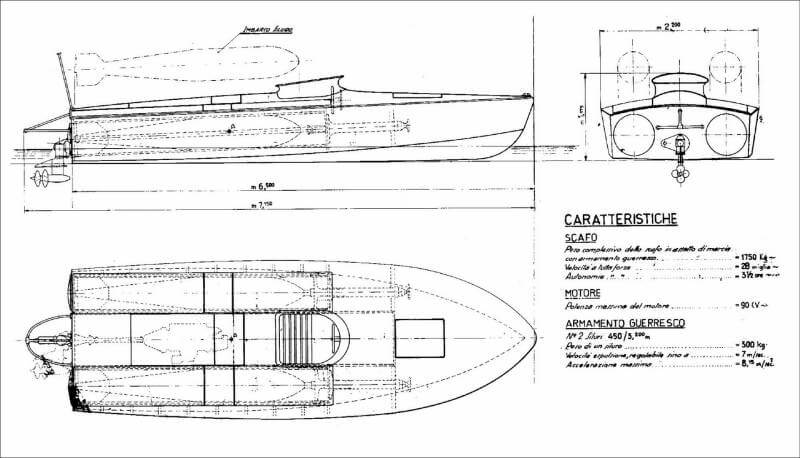
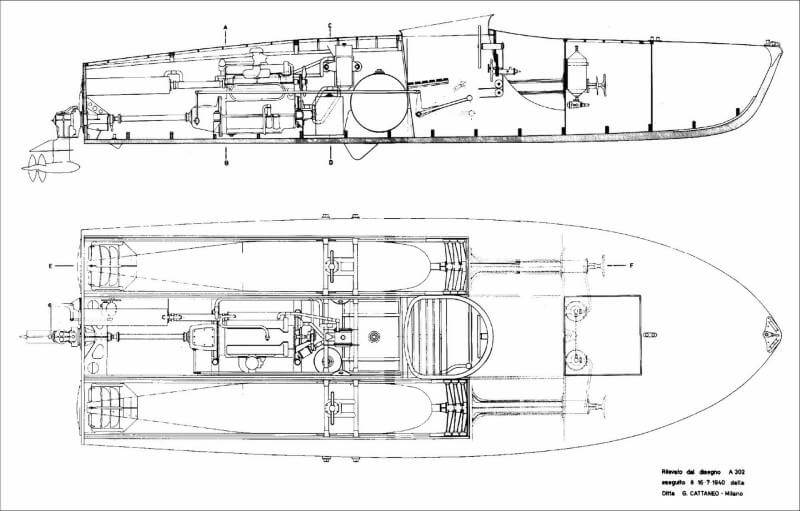
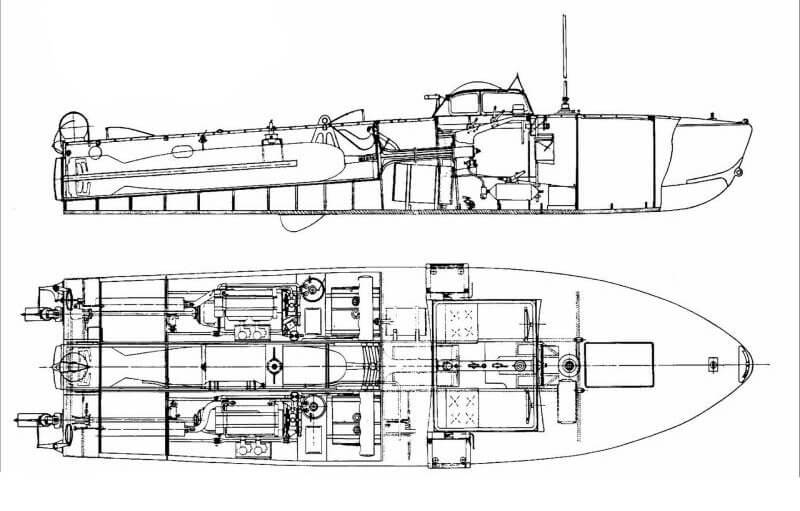
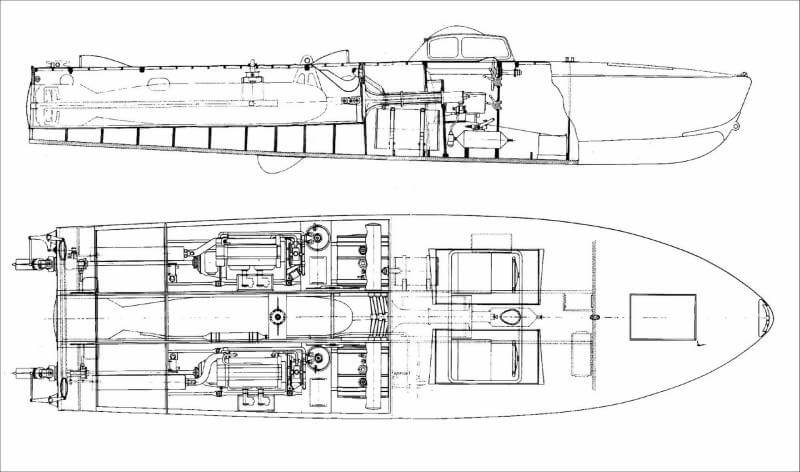
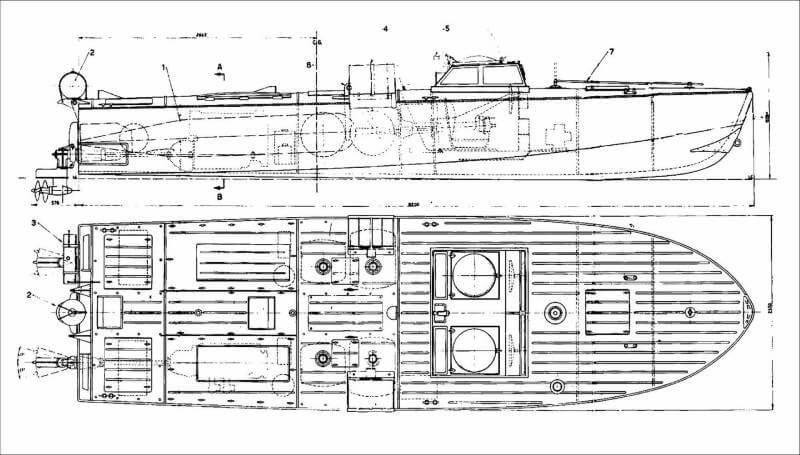
| Motoscafi Turismo Silurante Modificati |
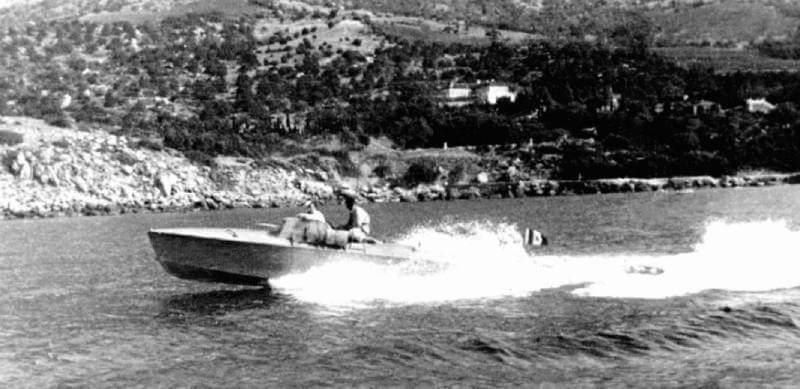
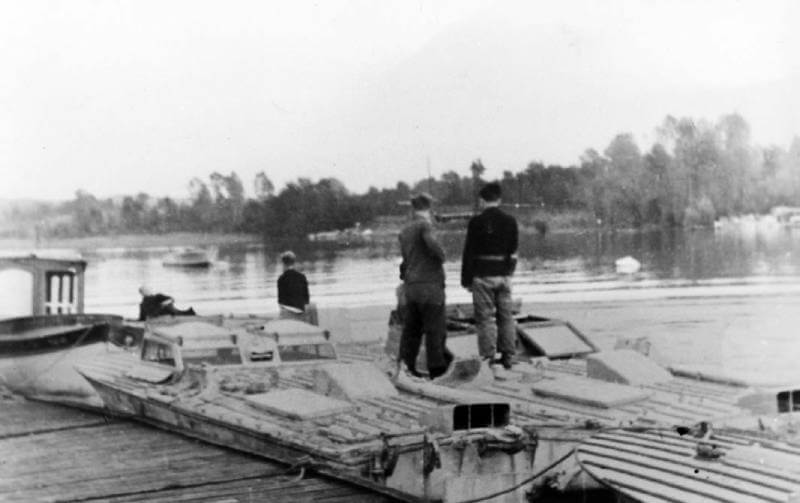
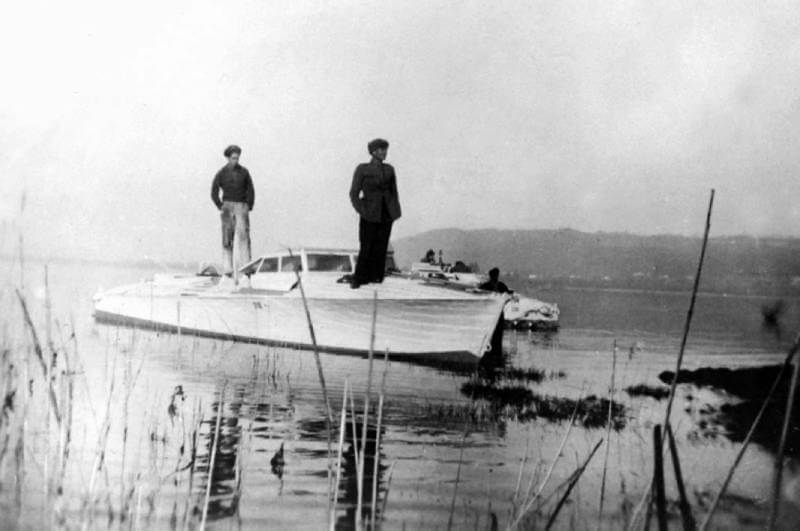
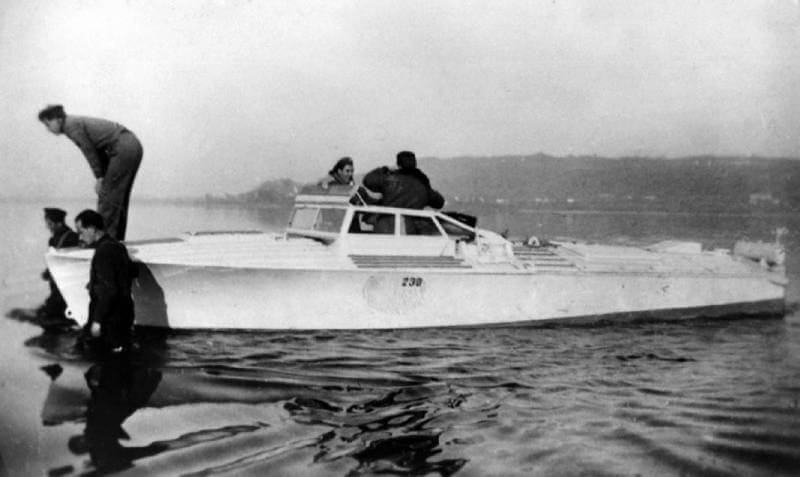
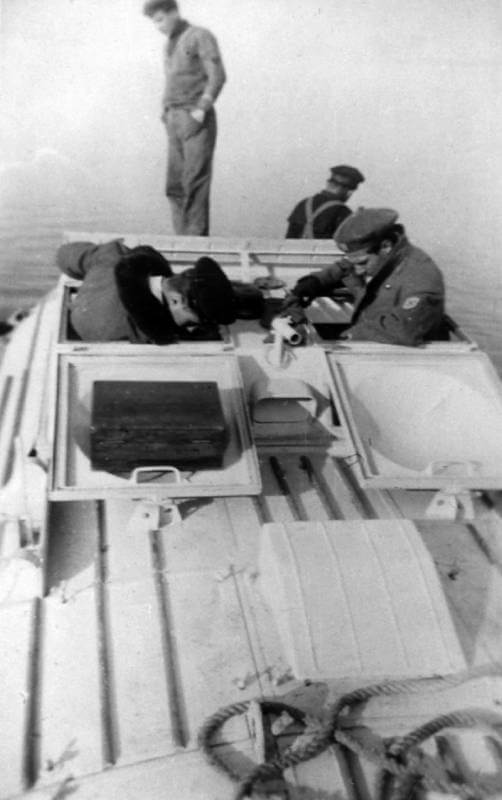
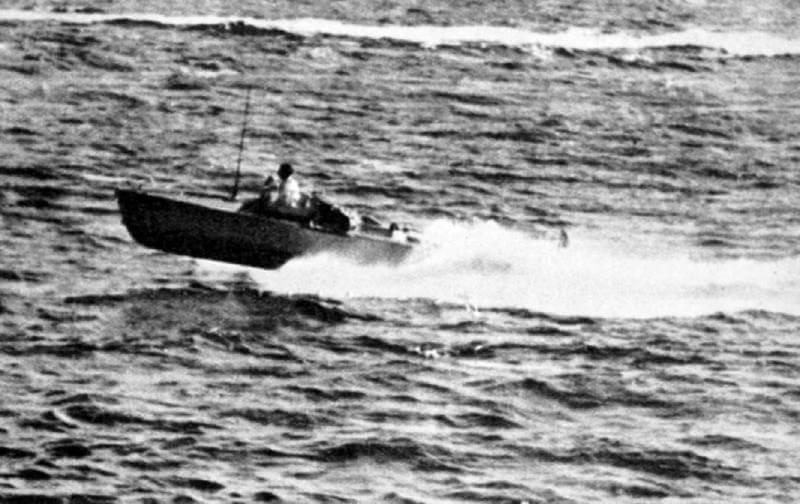
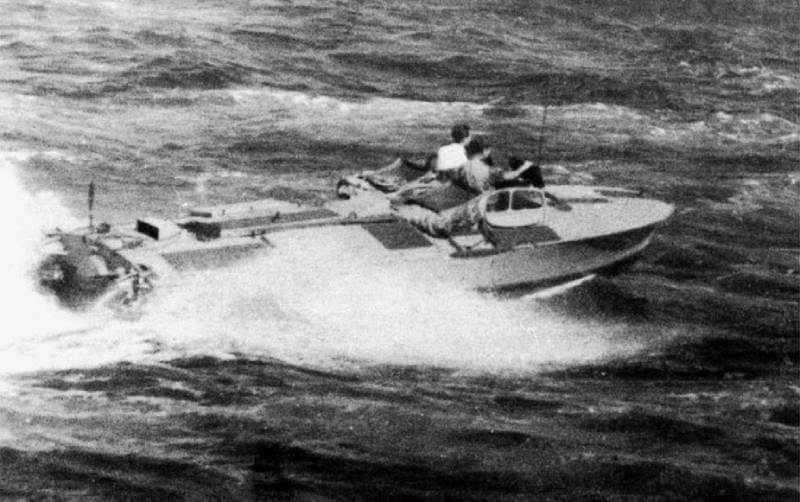

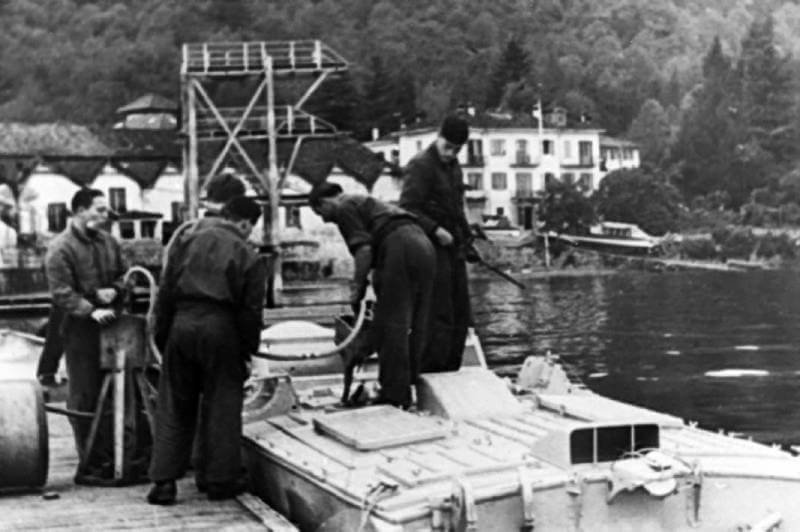
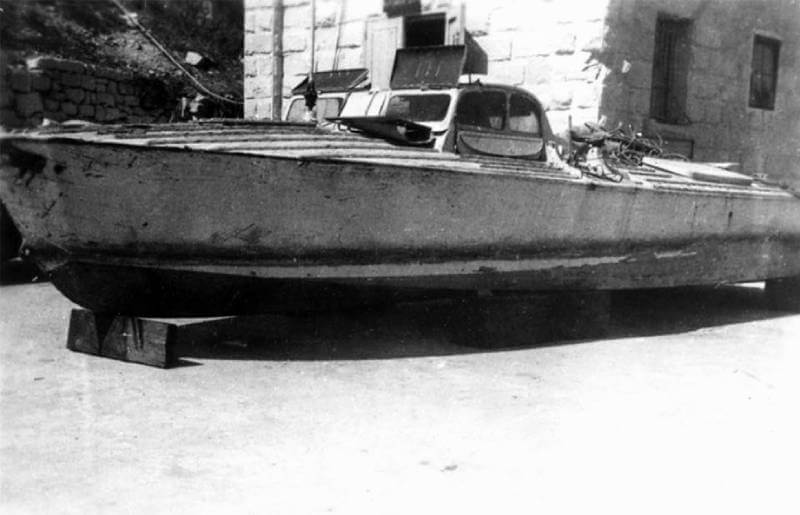
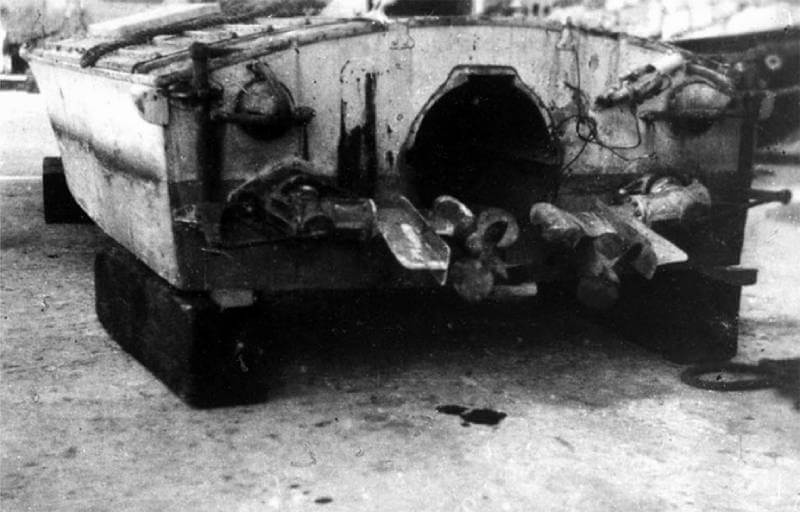
| Motoscafo Turismo Silurante Modificato Allargato |
